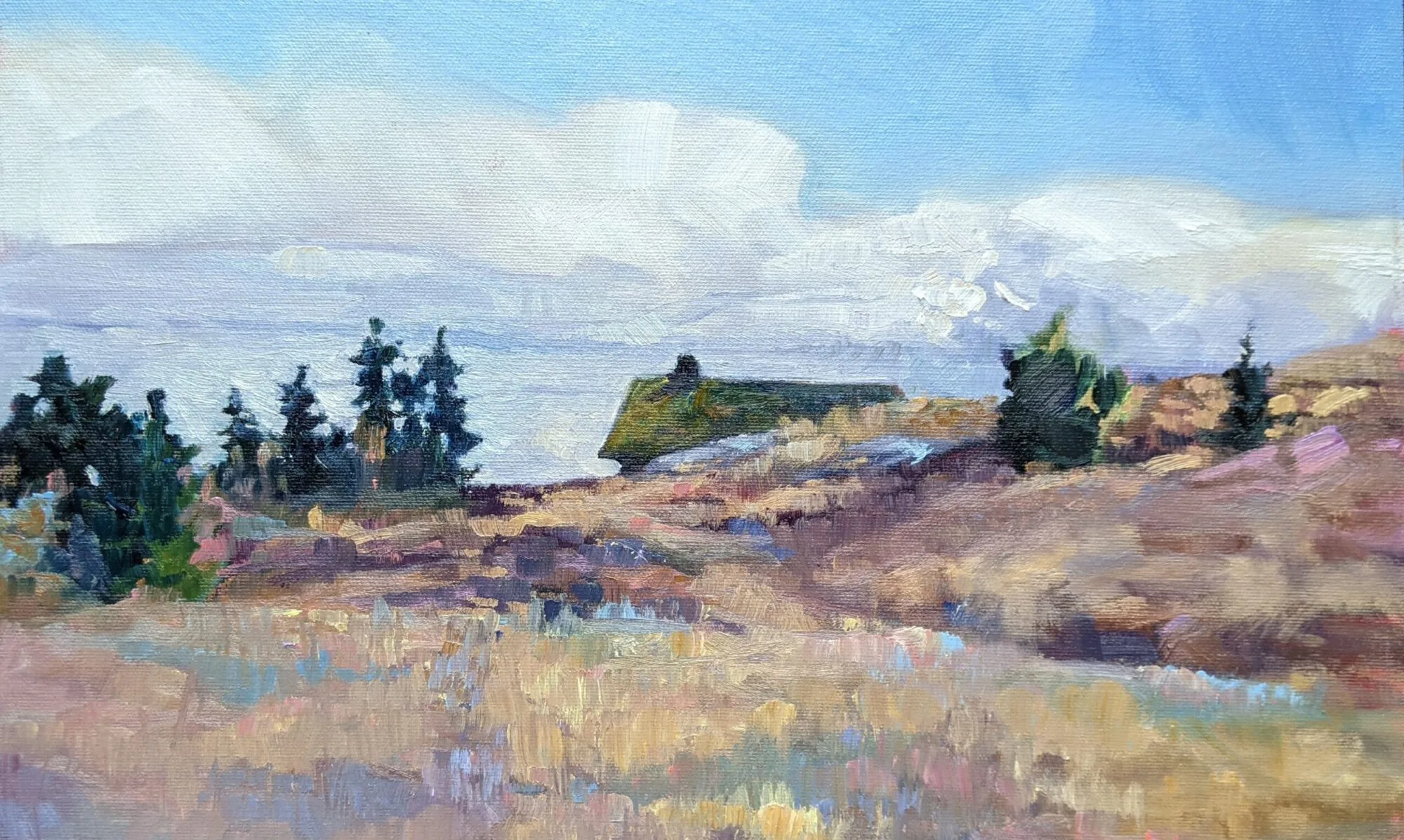There’s more to truth than observable facts, and it’s your job to talk about that.
On Monday, Ken DeWaardand I went out to catch the last of the autumn gold before yesterday’s drenching rain. We met at a beautiful old farm in Hope, owned by an elderly lady who gave us some hollyhock seeds in the bargain.
There were two structures that interested me—a fine old Maine cape, and a white frame building glowing violet with a young maple blazing yellow in front of it. “You choose first,” we told each other. This is often the hardest—and always the most important—part of field painting. In the end, I chose the farmhouse and he chose the maple, and I proceeded to complain for the rest of the morning.
 |
| The scene I painted. |
I know that narrative is very old-fashioned, but it has its place in grounding plein air paintings. The farmyard’s story was obvious. But with the building and tree, either the tractor would need to be included to explain the log pile, or some major narrative fudging would need to happen. That was out; the scene was inherently too delicately-balanced to muck with.
I believe in truth in painting as well as in life. But what does that mean? To a scientist, truth is what can be established through the scientific method. That viewpoint (itself not objective) has permeated our culture. It is, however, a very narrow definition. It leaves out aesthetics, ethics and the associative thinking that the human brain is so good at.
 |
| Snow on the forecast, by Carol L. Douglas |
Today, we all know that Galileo was right, but by the scientifically-known facts of his time, he was wrong. In fact, part of what Cardinal Bellarmineargued was that heliocentrism shouldn’t be taught unless it could be proved. What infuriates us moderns is the idea that the Inquisition could muzzle science, and we’re right to feel that way. But that’s based on an unprovable ethical argument: the idea that science should operate independently of church or state.
If you were to walk to the post office with me this morning, you probably wouldn’t notice the power lines. You’d see the elegant houses, grand old trees, and raking light across the harbor. That’s because we see with our hearts, and we focus on some things to the exclusion of others. When we’re very young and first investigating realism, we think we should include every detail. As we get older, we’re more attracted by that emotional truth, which has little to do with the objective truth.
 |
| The scene I was riffing off. |
Yesterday, I managed to sneak in a tiny painting of the building that Ken originally painted. I was demonstrating limited palette. That’s another subject where truth is too complex to be boiled down to easy inanities. In theory, you can get to any color using just red, blue, yellow and white paint. But the chroma and clarity of those mixes depends on the pigments you use and the medium you’re working in.
It’s not that the paints transmogrify, it’s that each different pigment and base has different undertones. These mix well in some directions, but cancel each other out in other mixes. If you doubt me, try to make a classic chromatic black (cadmium yellow, cadmium red, ultramarine blue) with acrylics. You’ll get something that looks like you picked it up on your shoe.
